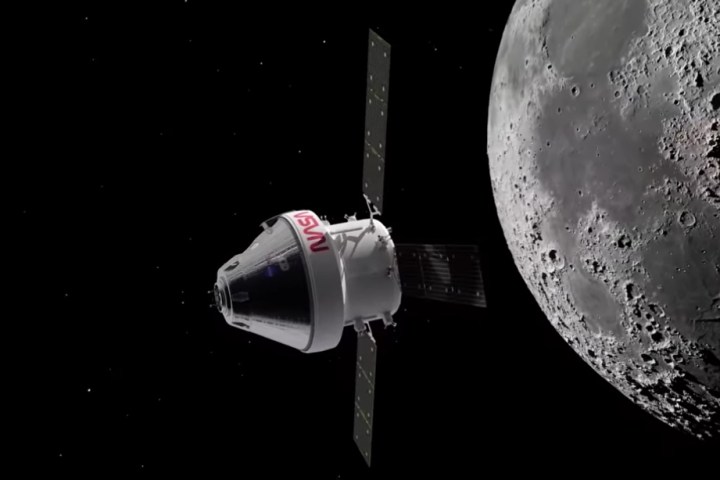NASA’s Orion spacecraft is heading through space and on its way to the moon and is set to make a close approach on Monday, November 21. If you want to follow along with Orion’s journey you’ll be able to tune into a live stream and see coverage of the spacecraft firing its engines and passing by the moon, using the moon’s gravity to enter a distant retrograde orbit.
We’ve got the details on how to watch it below.
What to expect from the flyby

Orion is currently traveling away from Earth, but our planet is still the major gravitational force acting on it. On Monday, the spacecraft will enter what is called the lunar sphere of influence, meaning that the moon will become the primary gravitational force acting on the spacecraft.
Orion will fire its engines, referred to as a burn, and use the moon’s gravity to increase its speed. This acceleration, along with another burn, will help the spacecraft to pass 40,000 miles beyond the far side of the moon and get into an orbit called a distant retrograde orbit. This is a highly stable orbit, meaning the spacecraft needs only minimal fuel to maintain it, and Orion will stay there for around one week, traveling around the moon in the opposite direction from how the moon travels around the Earth.
As Orion moves into this orbit it will make its closest approach to the moon, coming within 80 miles of its surface. There are cameras on board Orion, including those located on the tips of its solar arrays, which should be able to capture some stunning views of the moon as it passes by. “After the conclusion of the outbound powered flyby, once we reacquire comm with Earth, we are expecting to provide some good imagery,” said Jim Geffre, Orion Vehicle Integration Manager, in a press conference.
How to watch the flyby
NASA will be live-streaming coverage of Orion’s flyby of the moon on the morning of Monday, November 21. You can watch coverage beginning at 7:15 a.m. ET (4:15 a.m. PT), with the spacecraft firing its engines to enter the gravity of the moon at 7:44 a.m. ET (4:44 a.m. PT). Orion will make its closest approach to the moon just before 8 a.m. ET (5 a.m. PT).
To watch the livestream, you can either head to NASA’s YouTube page for the event or use the video embedded near the top of this page.
There will also be another live stream on Friday, November 25, covering another engine burn which will put Orion into distant retrograde orbit. Coverage on Friday will begin at 4:30 p.m. ET (1:30 p.m. PT) with the burn scheduled for 4:52 p.m. ET (1:52 p.m. PT).
Editors' Recommendations
- NASA’s Orion spacecraft has ‘critical issues’ with its heat shield, report finds
- How to watch three crew members launch to the ISS on Thursday
- How to watch SpaceX Crew-8 launch to the space station tonight
- How to watch the Ax-3 crew splash down on Friday
- How to watch NASA launch its newest ocean and atmosphere observation satellite tonight



